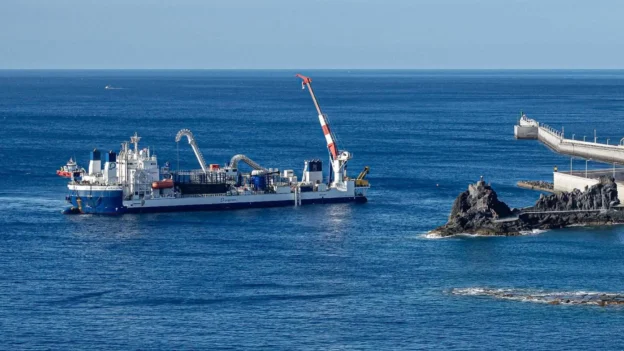The company Red Eléctrica, part of the Redeia Group, has started the works for the laying of the new submarine electricity link between the islands of Tenerife and La Gomera. This infrastructure will connect both islands energetically by means of a double 66 kV line with a capacity of 50 MVA per circuit.
The submarine cable laying system
This link is part of the 2021-2026 Transport Network Development Plan, which seeks to strengthen the security of supply in La Gomera and facilitate greater integration of renewable energies. renewable energies in the archipelago. It will also contribute to a reduction in overall generation costs by enabling the coordinated operation of the electricity systems of both islands.
The Cable Enterprise vessel, operated by the company Prysmian, is leading the laying work. This project has started in La Gomera with the installation of the first section towards Punta Blanca, in Tenerife. Subsequently, the vessel will return to its starting point to lay the second circuit, with an estimated completion date of October. The whole project will be operational by the end of the year.
With a length of 36 kilometers and a maximum depth of 1,145 meters, this link is the deepest three-pole alternating submarine cable installed to date. To cope with these conditions, a reinforced cable design has been developed with lightweight materials adapted to the highly demanding underwater environment.
The interconnection links two new substations: El Palmar in La Gomera (completed), and Chío in Tenerife, in service since early 2025. Both are part of the strategy to modernize the island’s electricity infrastructure.
In the onshore areas, directional drilling techniques have been used to avoid impacts on marine biodiversity in the coastal strips. This methodology allows the cables to be introduced by means of microtunnels from the mainland to points far from the coast, protecting both fauna and vegetation.
The layout of the interconnection has been designed to minimize the impact on the landscape and preserve the local ecosystem. The selection of routes, materials and construction techniques responds to criteria of sustainability and respect for the volcanic singularity of the terrain.
Source and photo: Redeia

